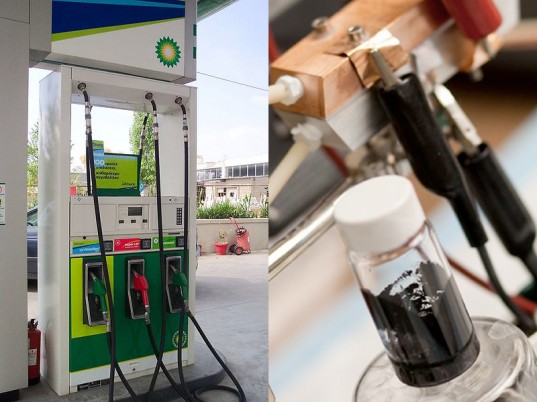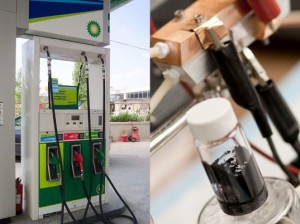February 20, 2014 – How February is flying by while I am here with my wife and dog in Florida. In another week we will be packing up to start heading north. I will miss the sunny warmth, the smell of the ocean, the feel of sand beneath my feet, and the colors that have made coming here very much worthwhile. But back to the business of a different future than the one we face next week.
An initiative funded by the U.S. Advanced Research Projects Agency for Energy is stimulating the development of batteries that can be recharged or refueled as quickly as we pump gas or diesel into our cars. These are batteries that literally use rechargeable fuel, fluid packed with electrons that can be harvested by a generating device. Theoretically an electric vehicle (EV) with one of these could drive 900 kilometers (over 500 miles) on a single charge and then quickly replace the liquid electric fuel at a pumping station that looks like the ones you use today to get gas and diesel. The research is being done at the Argonne National Laboratory and the Illinois Institute of Technology, GE, the National Renewable Energy Laboratory, and 24M, the latter a new start up spun out of Massachusetts Institute of Technology.
Current EV batteries consist of a large percentage of components that play no part in storing energy. Sensors, connectors, casing, and coolant can amount to 75% of an electric battery pack by weight. But with a fluid energy storage battery most of that excess baggage is not required. The result a smaller battery pack and lower production and operational costs. These current batteries layer material to create electron flow. Need more electrons, add more layers of material.
That’s not the way rechargeable fuel batteries work. Instead the fluid electrode gets stored in a tank similar to a gas tank. The fluid gets pumped from there to an electric generator. Need to add distance – just increase the size of the fuel tank, not the generating device.
Fluid energy storage is not new. Fluid storage today can be combined with renewables like solar and wind to ensure continuous energy generation both day and night, and on days the wind may not blow. So far the Illinois Institute of Technology has been able to demonstrate a hybrid battery, half fuel, half solid. In their research 24M has demonstrated the ability to concentrate energy-dense electrode powders in liquid suspension and extract energy from it. But the real key to success will be creating to make them as attractive to consumers as today’s gasoline and diesel-fed vehicles ending the range anxiety issue for EVs.
Unlike static fluid energy storage, size and weight remain another big issues for EVs. So the more energy that can be extracted per kilogram of fluid speaks to the viability of the technology. And of course once we have fluid storage technology we will have to manufacture it in sufficient quantity to make it attractive commercially and then build the network infrastructure to distribute it.




















[…] Creating electron dense liquid batteries can extend EV ranges to match conventional cars and refueling will take a matter of minutes. […]
[…] New Battery Technologies May Make EVs Ubiquitous https://www.21stcentech.com/battery-technologies-evs-ubiquitous/ […]